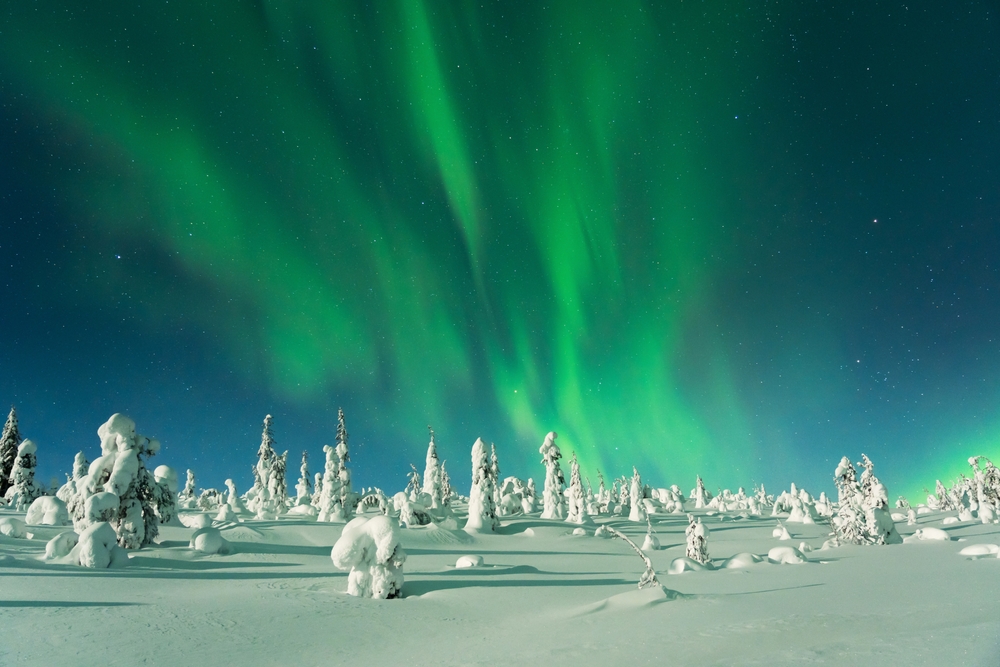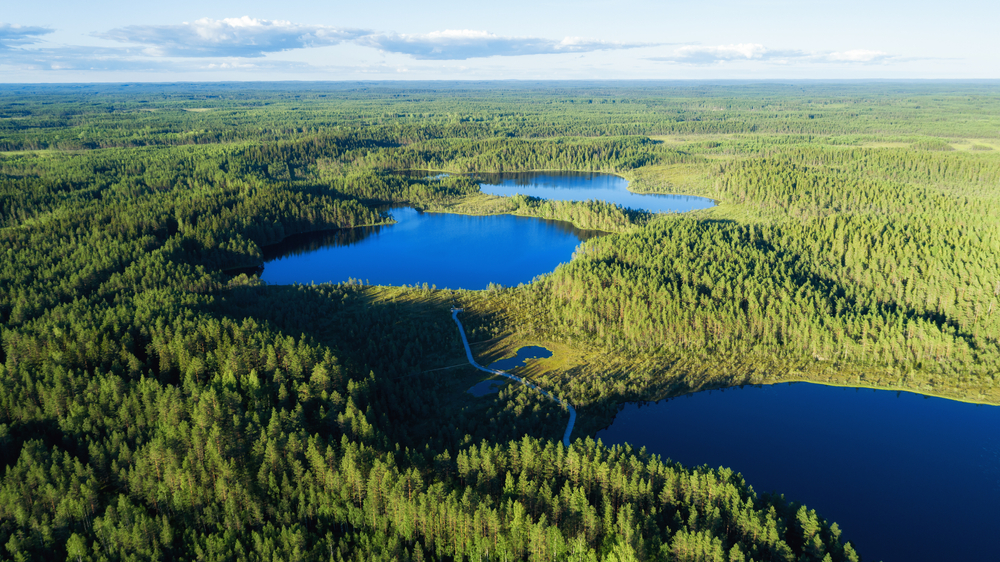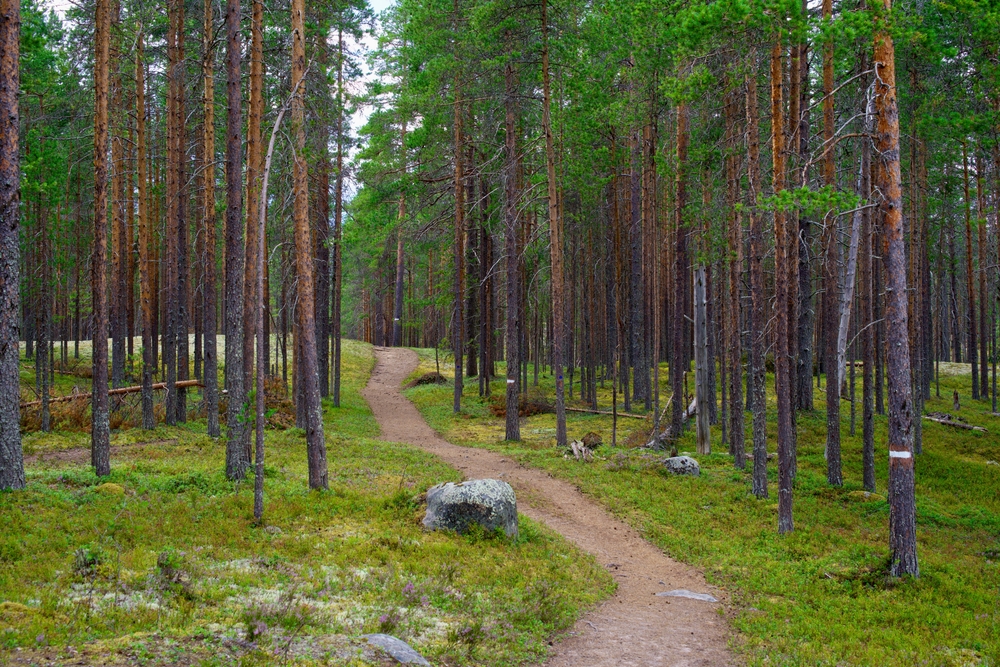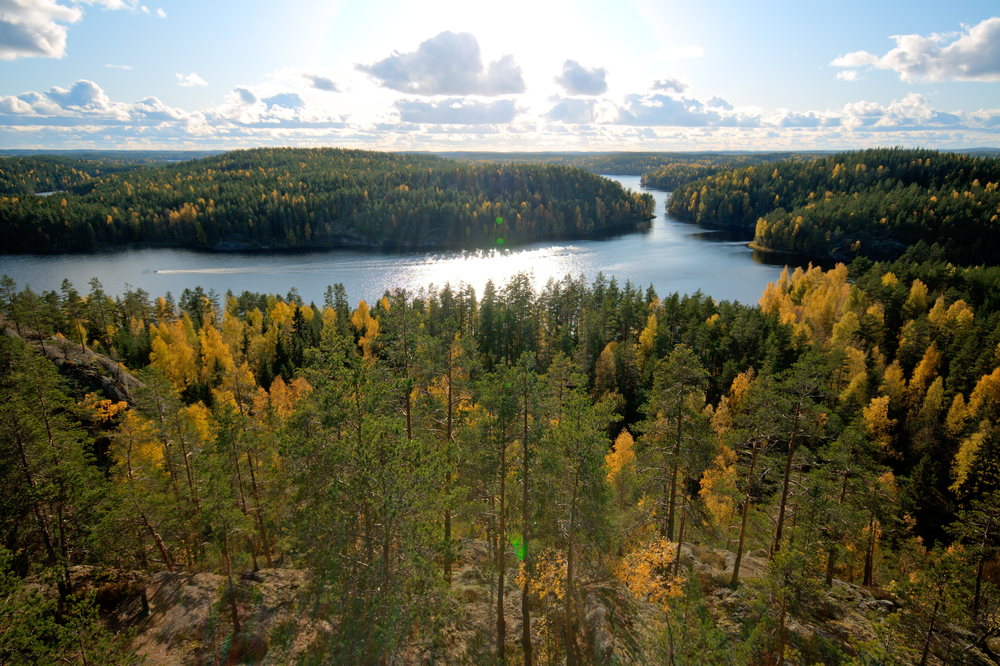Southern Konnevesi Overview
Southern Konnevesi National Park, known locally as Etelä-Konneveden kansallispuisto, is a pristine protected area in central Finland, covering approximately 15.5 square miles (40 square kilometers).
Established in 2014, this national park is located in the Northern Savonia region, near the town of Rautalampi, and is known for its stunning lake landscapes, rugged rocky shores, and lush forests. The park offers a unique blend of vast waterways and scattered islands, making it an ideal destination for those seeking adventure and tranquility in nature.
The terrain of Southern Konnevesi National Park is characterized by a mixture of rolling hills, steep cliffs, and numerous islands that dot the waters of Lake Konnevesi. The lake itself is a defining feature, with its crystal-clear waters stretching into numerous bays and narrow channels, framed by ancient granite formations that have been shaped by glaciers over thousands of years.
The park’s forests are primarily composed of old-growth pine, spruce, and birch trees, creating a diverse ecosystem that supports a variety of plant and animal species. The landscape is further enhanced by lush meadows and wetlands, providing essential habitats for wildlife. The park’s rugged cliffs and rocky islets are home to resilient flora that thrives in Finland’s northern climate, while the deeper woodlands provide shelter for larger mammals.
Wildlife enthusiasts visiting the park may encounter a range of species native to Finland. The dense forests are home to elk, deer, and smaller mammals such as foxes and hares. The park is also an important habitat for predators, including the elusive lynx, which roams the remote areas.
Birdwatchers will find Southern Konnevesi particularly rewarding, as the park supports an array of bird species. The majestic white-tailed eagle, a symbol of Finnish wilderness, can often be seen soaring over the lake, while ospreys nest along the shoreline, diving into the waters to catch fish. Other notable birds include the black-throated loon, capercaillie, and various woodpeckers, all of which contribute to the region’s vibrant birdlife.
One of the most popular attractions in Southern Konnevesi National Park is the opportunity to explore its waterways. Canoeing and kayaking are among the best ways to experience the park, allowing visitors to navigate the pristine lake, weave through small islands, and access secluded beaches. The calm yet expansive waters provide an ideal setting for paddlers of all skill levels.
Hiking is another favored activity, with well-marked trails such as the Kalajan kierros offering scenic views from high cliffs and rocky outcrops. Fishing is permitted in designated areas, drawing anglers in search of pike, perch, and zander. Winter visitors can enjoy cross-country skiing and snowshoeing when the landscape is covered in snow.
Conservation efforts within the park focus on preserving its delicate aquatic and forest ecosystems. Lake Konnevesi is known for its exceptionally clear waters, and regulations are in place to prevent pollution and maintain water quality.
The park also plays a crucial role in protecting old-growth forests, ensuring that native species can thrive without human interference. Sustainable tourism initiatives promote responsible visitor behavior, helping to balance conservation with recreation. Despite challenges such as climate change and increasing tourism pressure, the park has successfully maintained its pristine environment, offering a sanctuary for wildlife and an unspoiled retreat for nature lovers.
















































































